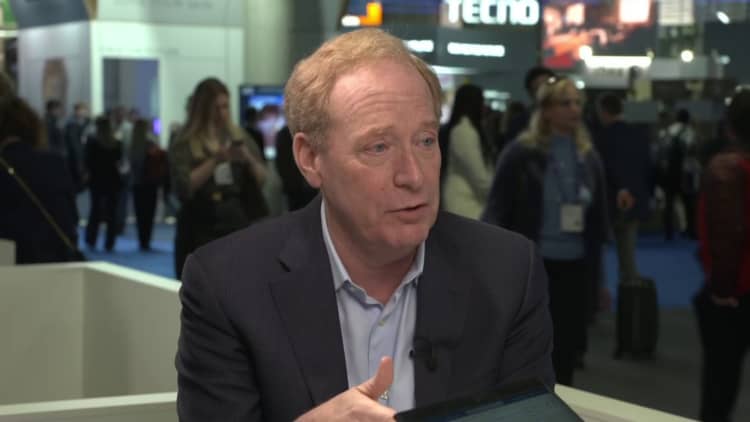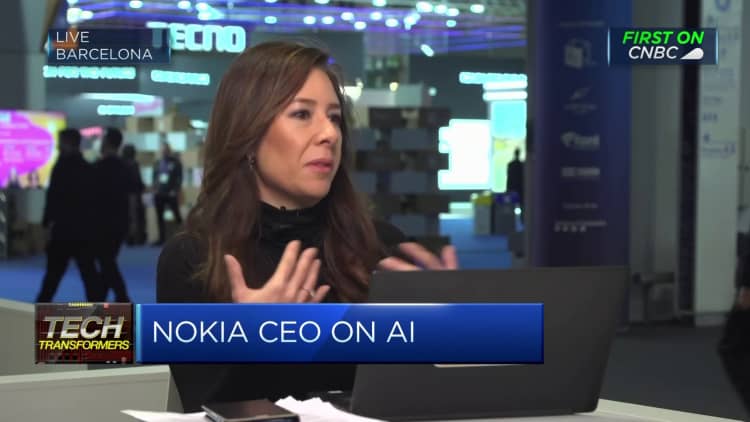The fast adoption of e-commerce, on-line streaming, and office productiveness instruments, particularly in the course of the COVID-19 pandemic, has put great strain on at this time’s telecommunications networks.
Noor Picture | Getty Photographs
Among the world’s largest expertise firms are backing a brand new telecommunications community they are saying will assist scale back the general energy consumption of data-intensive synthetic intelligence functions and speed up the transition to the subsequent era of 6G cellular web.
like Microsoft, Google, Inteland sony is backing a little-known initiative, the IOWN International Discussion board, a worldwide group of cloud hyperscalers, telecom teams and chip producers.
These firms intention to totally deploy “all-photonic” networks (APN) by 2030.
What’s a photonic community?
The IOWN International Discussion board is a worldwide group that develops technical requirements for all-photonic networks.
Dozens of main tech firms have signed on as supporters. These embrace firms like Microsoft and Google, that are behind two of the biggest public cloud platforms.

Telecommunications firms, e.g. NTT, Ericsson and Nokia He’s additionally a core member of the group. Chipmakers additionally play a key position, together with Intel and SK Hynix.
Merely put, photonic networks are networks that use mild reasonably than electrical pulses to transmit knowledge. This method is predicted to considerably scale back the power consumption of worldwide knowledge transmission.
Electrical energy utilization is an enormous concern within the tech business proper now. The fast adoption of e-commerce, on-line streaming and office productiveness instruments, particularly in the course of the Covid-19 pandemic, has compelled firms to re-evaluate their community infrastructure and discover new methods of transferring knowledge.
What’s the aim?
The aim is to alleviate the present strain on telecommunications networks, which is predicted to worsen within the coming years as demand for digital adoption and synthetic intelligence (particularly generative synthetic intelligence) continues to develop.
“Cell site visitors is rising each day,” Katsuhiko Kawazoe, president of the IOWN International Discussion board, instructed CNBC by way of e mail. “Environment friendly use of radio spectrum and energy is required.”
Kawazoe added that IOWN expertise permits operators to immediately optimize using spectrum and energy in cellular networks based mostly on particular circumstances.
For instance, a big metropolis could require extra radio installations throughout workplace hours than at evening. Nevertheless, residential areas would require extra items to serve staff at evening after they go residence.
IOWN expertise will “permit us to black out sure conditions within the community,” explains Gonzalo Camarillo, head of implementation elements at Ericsson and chairman of the IOWN International Discussion board Advertising and marketing Steering Committee.
Decreasing the local weather impression of synthetic intelligence
Giant language fashions, such because the one behind OpenAI’s ChatGPT, require massive quantities of coaching knowledge and highly effective graphics chips known as GPUs. However this comes at an enormous price to the local weather.

Masahisa Kawashima, IOWN technical director of NTT Company and chairman of the IOWN International Discussion board Technical Working Group, mentioned that photonic networks could make smaller knowledge facilities extra highly effective.
“Knowledge facilities are getting larger and greater, and hyperscale knowledge facilities are a part of society’s battle to scale back carbon emissions,” Kawashima mentioned.
“Many knowledge facilities are too concentrated in a small space, which ends up in a big power demand in that space. But when we use IOWN APN, we are able to permit customers to deploy knowledge facilities over a large space,”
Kawashima mentioned every knowledge middle on the community is much like a “hyperscale” knowledge middle, even whether it is mid-sized. Builders of AI fashions can use shared GPU infrastructure in smaller areas to develop their AI fashions.
“Synthetic intelligence has turn into the middle of competitors in lots of industries, together with automotive and prescription drugs. Many firms are considering working their very own GPU infrastructure,” Kawashima mentioned.
What’s going to IOWN’s expertise be used for?
The IOWN International Discussion board is exploring a number of use instances for photonic networks with its companions. One is that banks use IOWN expertise of their back-end infrastructure.
Kawashima mentioned banks might function two impartial knowledge facilities at completely different websites after which replicate knowledge between the 2 websites. It will assist them “obtain resilience” of their infrastructure, he added.
Banks and different monetary companies firms must ship knowledge backwards and forwards shortly to make sure consistency of their companies and to make sure transactions are processed easily – whether or not they’re deposits, withdrawals or wire transfers.
Mitsubishi UFJThe Financial institution of Japan is without doubt one of the main establishments utilizing IOWN expertise for monetary infrastructure.
One other use case is broadcasting and media streaming. Immediately’s fashionable streaming platforms, corresponding to Netflix and Amazon Prime, use massive quantities of knowledge to facilitate the supply of films and TV exhibits to the cloud.
The aim of IOWN is to scale back power consumption whereas rising the information capability that may be despatched over the community and lowering latency.
Sony is working with NTT to develop a wide-area distant manufacturing platform for broadcast stations, newsrooms and occasion halls.

Katsutoshi Itoh, director of connectivity expertise at Sony’s R&D middle, instructed CNBC: “Distributed computing is certainly attainable, and it’ll quickly turn into extra environmentally pleasant and energy-efficient.”
It might additionally assist with the 6G transition
IOWN expertise is predicted to drive the transition to 6G, the subsequent era cellular community past 5G.
Kawashima of NTT mentioned that optical community expertise can scale back the price of deploying 6G antennas for telecom operators. It additionally permits them to share radio towers for extra environment friendly community optimization.
“With the intention to deploy the antenna, we’d like optical fiber to attach the antenna to the radio knowledge middle,” Kawashima defined. “So if we use IOWN APN to attach the antenna to the bottom station, then we are able to probably scale back the price of antenna deployment.”
“APN will permit cellular community operators to share radio towers,” Kawashima added. It’s because, for 5G and 6G, “many operators are fearful in regards to the large funding in antenna deployment.”
IOWN expertise remains to be within the early phases of growth. It’ll take a number of years for photonic networks to actually have an effect on the business.
At the moment, the IOWN International Discussion board is working in the direction of attaining its most important objectives by 2030.
